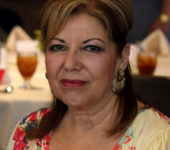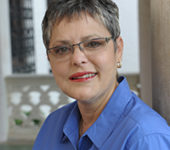• by Nilka Avilés, Ed.D., and Juanita C. García, Ph.D. • IDRA Newsletter • September 2013 •




IDRA’s publication, Science Instructional Strategies for English Learners – A Guide for Elementary and Secondary Grades, presents seven umbrella research-supported strategies for the science classroom (Villarreal, et al., 2012). This article describes one of the strategies: use cooperative groups to maximize language usage, global interaction and science achievement in a multicultural setting.
Research has shown that cooperative learning activities for English language learners help improve academic performance as well as increase motivation, strengthen self-esteem, encourage student bonding and promote literacy skills (Calderon, Sanchez & Slavin, 2011). Cooperative learning processes lessen individual competitiveness and foster cooperative small group problem-solving behavior as humans learn best when they collaborate with others and actively process personally meaningful information. When used correctly, cooperative learning develops students’ social and communication skills, increases tolerance and acceptance of diversity, and improves academic achievement. Students who have meaningfully participated in cooperative learning exhibit less competitive behaviors and more cross-ethnic cooperation. Furthermore, cooperative learning promotes better relationships among students with special needs and with varying races and ethnicities.
In using cooperative learning in the science classroom, teachers often fear that a shy student won’t participate fully when paired with more outgoing students. To solve this, teachers can create more equitable cooperative groupings, create activities that encourage participation from each student individually and provide excellent opportunities for students to acquire social skills in a natural setting. When paired well, a student who has stronger language skills can help a student with weaker language skills improve through cooperative learning science activities.
In traditional classrooms, ELL students usually work alone. They don’t have the chance to learn to work well with others or to manage their own emotions while interacting with others. Using cooperative learning structures helps students acquire social skills and deepen character virtues and emotional intelligence. In science, students must understand that questioning, response to review and open communication are integral to the scientific process. What sticks for students are learning experiences based on engagement. ELL students will become successful in science when they are engaged in hands-on, minds-on learning experiences.
Cooperative learning enables teachers to achieve the following instructional objectives to comply with the National Science Standards:
- Improve students’ thinking and help them construct their own understanding of science content by strengthening and extending their knowledge of the topic. The sharing of ideas allows students to explore, refine and question new ideas.
- Promote student involvement and engagement as students take responsibility for their own learning and not depend solely on the teacher.
- Aid in the development of important communication skills and scientific thinking processes.
Cooperative techniques provide the social settings in which teachers can help students analyze their thinking processes and encourage all students to interact with their teachers and peers in a way that is conducive to science learning.
A Beginning Point
Spencer Kagan’s (Clowes, 2011) Essential 5 is a list of cooperative structures to be used as a starting point to understanding cooperative learning. We at IDRA have conducted numerous cooperative learning professional development sessions. We have listened to teachers’ concerns and have used the following cooperative learning structures as a springboard to access and use pair structures to form teams, promote social skills and maximize student to student interaction.
The Essential Five
Rally Robin. In pairs, students alternate generating brief oral responses. Examples:
- If the earth is always rotating, why doesn’t it feel like we’re spinning?
- What does the shape of a car have to do with its speed and mileage?
- Centrifugal force pushes outward. Centripetal force pulls inward. Give an example of these two forces in action.
Timed Paired Share. In pairs, students share with a partner for a predetermined time while the partner listens. Then partners switch roles. Examples:
- What is the key thing that you learned?
- What is one question you have about the topic?
Round Robin. In teams, students take turns responding orally. Examples:
- What makes a good scientist?
- List objects that float.
- What is one of your favorite topics in science?
Rally Coach. Partners take turns, one solving a problem while the other coaches. Then partners switch roles.
- What is another way you could draw an atom?
- What are the steps involved in drawing a Lewis Electron Dot Diagram? Draw one for the element of your choice.
Stand Up, Hand Up, Pair Up. Students stand up, put their hand up and quickly find a partner with whom to share or discuss. This structure is perfect for class-building, processing and reviewing information, energizing the class, forming random pairs or teams, lesson starts or wraps.
The Essential Two
According to Kagan, a huge difference in achievement and engagement can be attained when teachers use Rally Robin and Think Pair Share, two strategic structures. Higher academic achievement becomes more evident and a reduction of the gap between high and low achieving students is apparent. There also is an improvement in social skills and cooperativeness, self-esteem, liking of school and learning, and positive classroom climate while discipline problems decrease. Also evident is an increase in leadership and employability skills, improved conflict resolution skills, and increased empathy and concern for others.
Intermingling cooperative learning structures with other teaching techniques enables students – whether ELL, learning-disabled, at risk or accelerated learners – to develop into a community of learners that models the process of open information exchange, which characterizes the world of science. Students have the opportunity to eagerly voice and debate scientific ideas and come to accept and share responsibility for their own learning. Students reflect on their own thinking and are more aware of their own decision-making and problem-solving skills. In the end, students not only develop deeper thinking and listening skills but they also become cohesive units as they collaborate to meet educational challenges.
Cooperative learning in the science classroom is a highly structured form of group work that focuses on the problem-solving that can lead students – when directed by an excellent and high quality teacher – to deep learning and genuine shifts in their thinking. We have provided you with a beginning point as a springboard to accessing and using pair structures. So don’t dread pairing your diverse students to do science projects. Go for it! All your students will reap the benefits.
Resources
Calderon, M., & R. Slavin, M. Sanchez. “Effective Instruction for English Learners,” Immigrant Children (Princeton, N.J.: The Future of Children, Spring 2011) 21(1).
Clowes, G. “The Essential 5: A Starting Point for Kagan Cooperative Learning,” Kagan Online Magazine (San Clemente, Calif.: Kagan Publishing, Spring 2011).
Kagan, S., & Kagan, M. Kagan Cooperative Learning (San Clemente, Calif.: Kagan Publishing, 2009).
Kagan, S., & M. Kagan, L. Kagan. Reaching Science Standards through Cooperative Learning: Providing for All Learners in General Education Classrooms (Port Chester, N.Y.: National Professional Resources, Inc., 2000).
National Academies of Science. Next Generation Science Standards (Washington, D.C.: National Academies of Science, April 10, 2013).
Villarreal, A., & V. Betancourt, K. Grayson, R. Rodríguez. Science Instructional Strategies for English Learners – A Guide for Elementary and Secondary Grades (San Antonio, Texas: Intercultural Development Research Association, 2012).
Nilka Avilés, Ed.D., is an IDRA senior education associate and Juanita C. García, Ph.D., is an IDRA education associate. Comments and questions may be directed to them via email at feedback@idra.org.
[©2013, IDRA. This article originally appeared in the September 2013 IDRA Newsletter by the Intercultural Development Research Association. Permission to reproduce this article is granted provided the article is reprinted in its entirety and proper credit is given to IDRA and the author.]


